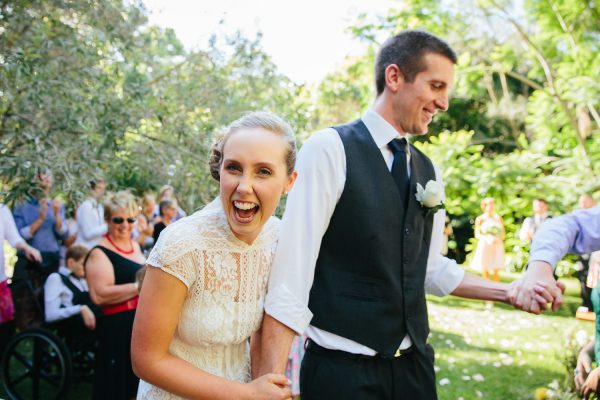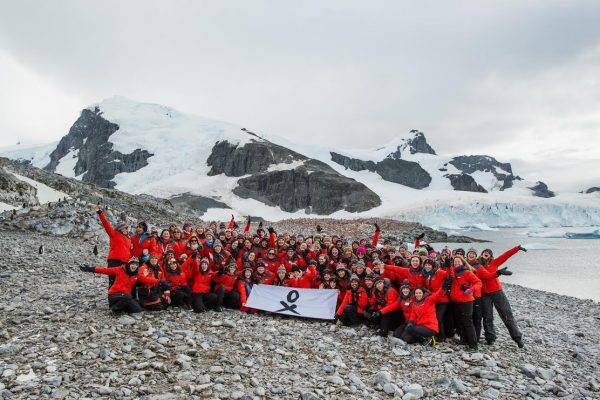Let’s start this post off with a harsh truth:
The world is facing a climate crisis, and our governments are showing very little interest in making this their priority. Activism is the only way we can change that.
And, let’s keep it real. Activism can sometimes feel intimidating. Or you might feel forced to scream and march, even when you still want to be part of that change. Believe me. I’ve been there.
For many, taking things slow when it comes to urgent matters can seem unproductive. But this could not be further from the truth.
Image via Hae Greendal

Quick actions are 100% necessary for intervention in urgent matters. But when the momentum is gone, the movement loses critical time to achieve all its goals. If you deeply care about something, you don’t let it go the moment the hype is gone.
If you want to be part of a movement, but don’t necessarily feel comfortable using a megaphone, or are an introvert at heart, you will like what I have to say.
Here’s how you can start your slow activism journey in five simple steps
Slow activism is for those of us who believe in mindful and purposeful change.
It avoids excluding diverse people (and other living beings) out of a movement. This is because you have a deep understanding of what’s going on. It’s not always about solutions, but also about questioning the solutions we propose.
And remember, you create your own journey.
1. Educate Yourself—Sounds Simple But This is The Key
You’ve probably heard this a thousand times but stay with me. Education opens the doors to creativity and ensures that your activism doesn’t become toxic by excluding groups of people.
You might be thinking that by education, I mean reading academic papers, statistics, and scientific facts. And well… you’re right! Statistics and facts 100% help in advocating for your movement and having evidence to convince others to join in too.
Lucky for you, it’s not all academic papers. Unless that’s your jam. Educating yourself can also mean watching documentaries, reading fiction, or poems that raise awareness.
Education is also having conversations with others who are external to your experience. It also means analyzing your subconscious and how governments and organizations have spread unproductive propaganda. I’ll take this opportunity to mention the toxic propaganda that climate action is the responsibility of individuals and not of the government.
Your responsibility is to know everything that you can about it and questioning EVERYTHING you learned.
2. Know Your Strengths & Talents—This Is When You Define Your Activism
So once you feel comfortable dipping your feet into activism, and have tons of resources in the back of your mind to share with others, this is the moment you sit down and list the things you can do.
Ask yourself: What are my strengths? Drawing, singing, organizing, graphic designing, cooking, writing, and I’m sure you can think of other examples.
Use your strengths; that’s where your infinite power lies. If you draw, maybe create a short illustrated film as the one Alexandria Ocasio-Cortez narrated. If you sing, post YouTube videos to raise awareness with your songwriting. Or make an online concert to fundraise money. Let your imagination flow.
Other examples of slow activism are talking with your peers about what you learned, organizing a party to create art that changes the world, creating an Instagram, or starting a podcast with someone who likes to speak!
3. Find A Group of Motivated Activists—Real Change Starts Here
If you feel this enormous amount of anxiety being around people and having to maintain a conversation, it’s fine to start your activist journey on your own. An individual, however, can start something, but it will not create a change.
All the successful movements in history were accomplished with a group of people who envisioned the world they deserved.
The big systems we’re trying to change are not scared of you. But they’re definitely scared shitless of a group of educated and motivated activists.
So once you educate yourself, you know your strengths, and how you can apply them in your movement, it’s time to find your group of motivated slow activists. During COVID times, you might feel inclined to find an online group and join them.
Use what you already have with your group. This may be your talents, followers, or contacts.
If you want to be a slow activist, you have to deeply care about what you do because you have to show up consistently.
4. Re-energise and Repeat—Your Wellness Creates Change
Being an activist can bring significant levels of anxiety and stress. It’s both a personal and a collective journey. If you don’t feel motivated or creative, let’s be real, you will not create positive change. So resting and taking care of yourself is an absolute form of resistance.
Use this time to educate yourself, think back on what got you to act in the first place, and get creative again.
You’re a human being. Self-care is not selfish, and it will ensure that when you get back with your group, your activism is stronger than ever.
5. Normalise Slow Activism
Share diverse experiences, share the progress the movement has made, and encourage others to use their talents for slow activism.
If you’re an introvert, it might feel daunting to protest with so many people around you. But teaming up with others is so empowering. Especially when your strengths are valued, you will be protesting in no time!
To leave you thinking, here is a quote that applies to slow activism by Leo Babauta:
“We may feel productive when we’re constantly switching between things, constantly doing something, but in all honesty, we’re not. We’re just distracted.”
Here are some links to learn from other slow activists:
TED Talk: Activism needs introverts | Sarah Corbett
Post-Activist Bayo Akomolafe: Times are urgent, so let us slow down.
Excerpt from book: How To Be A Craftivist: the art of gentle protest by Sarah Corbett.
I would love to know how do you practice slow activism? And how did you start your activism journey?


